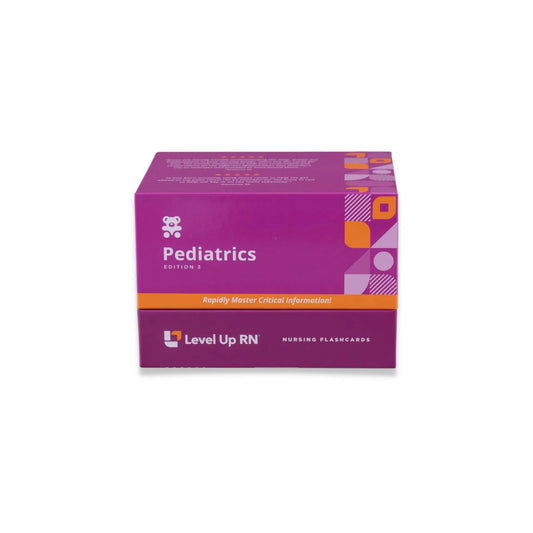Peds, part 43: Musculoskeletal Disorders - Legg-Calve Perthes and Clubfoot
Updated: Cathy ParkesLegg-Calve Perthes disease and clubfoot. The risk factors, signs and symptoms, diagnosis, and treatment of Legg-Calve Perthes. Risk factors, signs and symptoms, diagnosis, treatment, and family teaching for clubfoot.
Full Transcript: Peds, part 43: Musculoskeletal Disorders - Legg-Calve Perthes and Clubfoot
Full Transcript: Peds, part 43: Musculoskeletal Disorders - Legg-Calve Perthes and Clubfoot
Hi, I'm Cathy with Level Up RN. In this video, I'll be discussing Legg-Calve-Perthes disease as well as clubfoot. And at the end of the video, I'm going to give you guys a little quiz to test your knowledge of some of the key points I'll be covering, so definitely stay tuned for that. And as always, I will be following along with our Level Up RN pediatric nursing flashcards, so if you have our flashcards, go ahead and pull them out so you can follow along with me. Legg-Calve-Perthes is a disorder where a disruption of blood flow to the femoral head at the top of the thigh leads to necrosis or tissue death. It is more common in males and typically occurs between the ages of 3 and 12. The cause of this disorder is unknown. Signs and symptoms of Legg-Calve-Perthes includes a painless limp, hip pain and stiffness that increases with activity, and reduced range of motion of the hip. It can also cause the affected leg to become shorter. This condition can be diagnosed using an X-ray and/or MRI. Nonsurgical treatment of this disorder includes activity restriction with limited weight-bearing, as well as anti-inflammatory medications such as NSAIDs and physical therapy. If nonsurgical treatment is insufficient, then an osteotomy may be required. This is a surgery where the femur is cut, repositioned, and secured in the hip socket using plates and screws.
Moving on to clubfoot now. Clubfoot is a genetic disorder that causes deformity of the foot. Risk factors include a family history, maternal smoking or alcohol use during pregnancy, and gestational diabetes. In addition, males are twice as likely as females to be born with clubfoot. In terms of signs and symptoms, the affected foot is typically turned inward sharply, and then the calf muscle on the affected leg may be smaller. Clubfoot can be diagnosed through visual inspection. It can also be diagnosed through an ultrasound during pregnancy. The gold standard for treatment of clubfoot is serial casting followed by bracing. So children will typically need between 5 and 10 casts, and then once the foot is in the proper position, they will need to wear a brace. In terms of family teaching, it is super important that you reinforce the importance of compliance with bracing in order to prevent recurrence. It is estimated that poor compliance has an 80% recurrence rate. The child will need to wear the brace 24 hours a day for three months. And then after that, they will still need to wear their brace at night and during naps for several years. All right. It's quiz time, and I've got three questions for you. Question number one. Legg-Calve-Perthes can cause the affected leg to become shorter. True or false? The answer is true. Question number two. What is the gold standard for treating most cases of clubfoot? The answer is serial casting followed by bracing. Question number three. Lack of compliance with bracing can lead to what complication? The answer is recurrence of the deformity. All right. That's it for this video. I hope you found it to be helpful. Take care, and good luck with studying.


